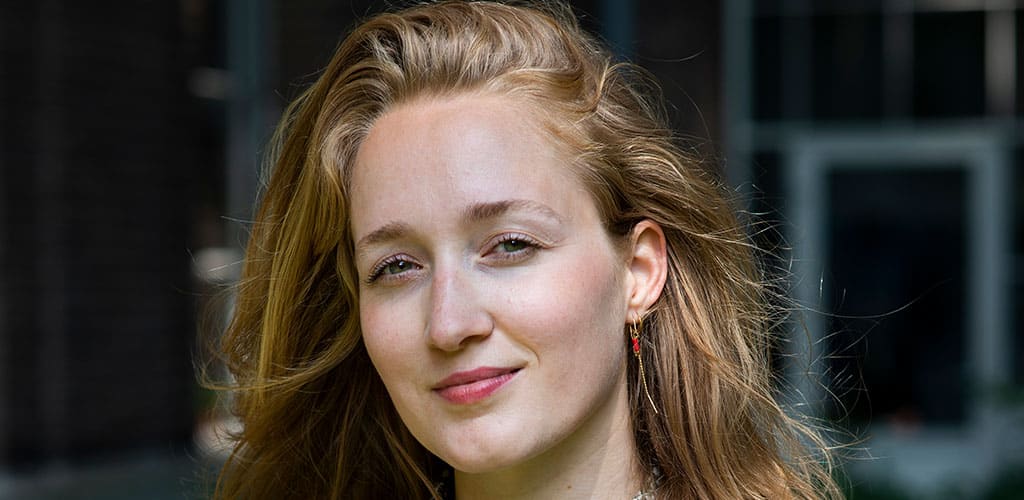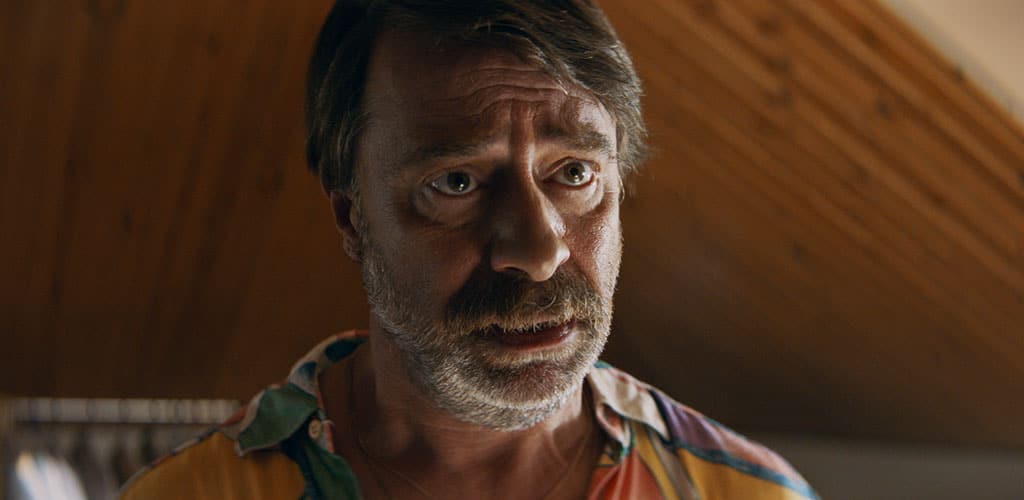Director Victoria Warmerdam on balancing comedy and emotional drama
05 AprilVictoria Warmerdam is an acclaimed filmmaker from the Netherlands, whose works Snorrie and Korte Kuitspier have both won awards at Indy Film Library’s annual festivals.

The scripts for Snorrie and Korte Kuitspierboth stand out for pairing an absurdist sense of fun with emotionally intelligent social commentary. Is it ever difficult to keep the ratio of comedy and drama in proportion?
Because the comedy in my films tends to tragic comedy, the line between comedy and drama is actually very thin. That makes it easier to find a balance between comedy and drama, although I am more comfortable with the comic part. I have no difficulties sensing if something is funny, but I feel less confident when it comes to “emotional” scenes. For some reason I then become very aware of the artificiality of film, fearing that it turns into melodrama.

In terms of your influences, what are your earliest memories of a storyteller or filmmaker whose style really impacted you? Did you take anything from them for the two films IFL has seen?
When I was very young, my brother was addicted to the complete oeuvre of the great Charlie Chaplin. So that became my first acquaintance with comedy. Chaplin’s comedy is very universal, which I really like to pursue with my own work. I wasn’t aware of his early influence, but when I realised this the other day, I decided I want to do more with physical comedy in my next films, inspired by Chaplin.
What has your early life as a filmmaker been like? What were the most important milestones on your journey so far?
When I was twelve years old, I realised that I wanted to become a film director. I had absolutely no clue what that meant, but it sounded like something for me. Although I am thirty now, I still feel like a beginner because there is so much more to learn. With my second short film Snorrie I won an award of the Dutch Screenwriters Guild and one of the Dutch Directors Guild. Those awards were huge milestones for me because they make me, or at least my film, feel respected by my fellow film-colleagues. I am very grateful for their acknowledgement.
People don’t always respond positively to having it pointed out that they are, consciously or otherwise, biased. When I reviewed Korte Kuitspier, one of the things that stood out to me was that the story carries us along, gets us essentially to laugh at someone being othered and alienated, before showing us the unnerving material consequences of that. How was the reception of the film from viewers in that case?
To be honest, I did not speak to viewers of the film about this particular reception you are talking about, but in general the film is received very well. People laugh about the film, but also realize it talks about something serious, about prejudices and minority groups. So sometimes it does lead to discussions afterwards, but never in an unnerving way.
Snorrie also used a similar one-two combination to a very different end. Initially we giggle at the absurdity of an imaginary person looking to mend a broken relationship with his now-adult friend. Eventually, this brings us to address how the need to ‘mature’ beyond the silly beliefs we have as children can see us stifle our emotions in an unhealthy way. What was your inspiration for this story? (And did you have an equivalent of Snorrie?)
Unfortunately I did not have an imaginary friend as a kid (I did have an imaginary treehouse though) but when I was making the film I discovered that a lot of people did have one when they were young. I simply woke up one morning, asking myself: where do all the imaginary friends go to when their kid does not see them anymore? I imagined this whole parallel universe of damaged imaginary friends in therapy. That in combination with the fact that I wanted to make something about the fact that it is okay for men to cry and be vulnerable. During the working process, the subtitle of the film was ‘a little ode to the crying man’.
You wrote and directed both Snorrie and Korte Kuitspier. Relating to its cast, which has a couple of well-known actors in it, as a young independent filmmaker, is it a daunting prospect to tell more established artists what to do? Has there been a learning curve for you, or were you just a natural from Day One?
Luckily I am comfortable with actors, even more so with well-known actors because I find it easier to work with actors who have a lot of experience, I can rely on their skills and ask more of them than from non-actors for example. But every day on set is a learning curve anyway, as a director you are not as much on set as your crew and actors, so I really like to learn from their experience.
Some filmmakers treat short film as a proving ground, before moving into longer productions. I know short film is a worthy art-form in its own right, so you obviously shouldn’t feel compelled to do that! But I do wonder, since you are already mastering the telling of stories in this format, is feature-length work something you’d be interested in? Or have you already found the ideal medium for you?
I am a huge fan of short film as a medium. I feel really challenged because you have literally a very short amount of time to tell your story in, it forces you to think everything through and to get to the core very quickly. I do not see this medium only as a stepping stone for feature-length work but nevertheless I would love to make something of more length.
I’m working on some feature concepts, but I find it difficult to “sell” my genre. Because my concepts are usually absurd and comic, you have to come across a reader (on the right spot) that gets it.
Last but not least, do you know what your next project will be, and how it will be different from Snorrie?
I am working on my next short film I am not a robot, a feminist black comedy sci-fi, about a woman (Ellen Parren) who begins to doubt whether she is a robot, bought by her own husband (Henry van Loon). Compared to Snorrie this film is much darker and slightly longer (25 minutes). I am really looking forward to it! The fact that we are shooting the film on 35 mm is definitely contributing to that excitement!

Source : https://indyfilmlibrary.com/2022/10/14/snorrie-director-victoria-warmerdam-and-oak-motion-pictures-producer-trent-on-the-strengths-of-dutch-independent-cinema/